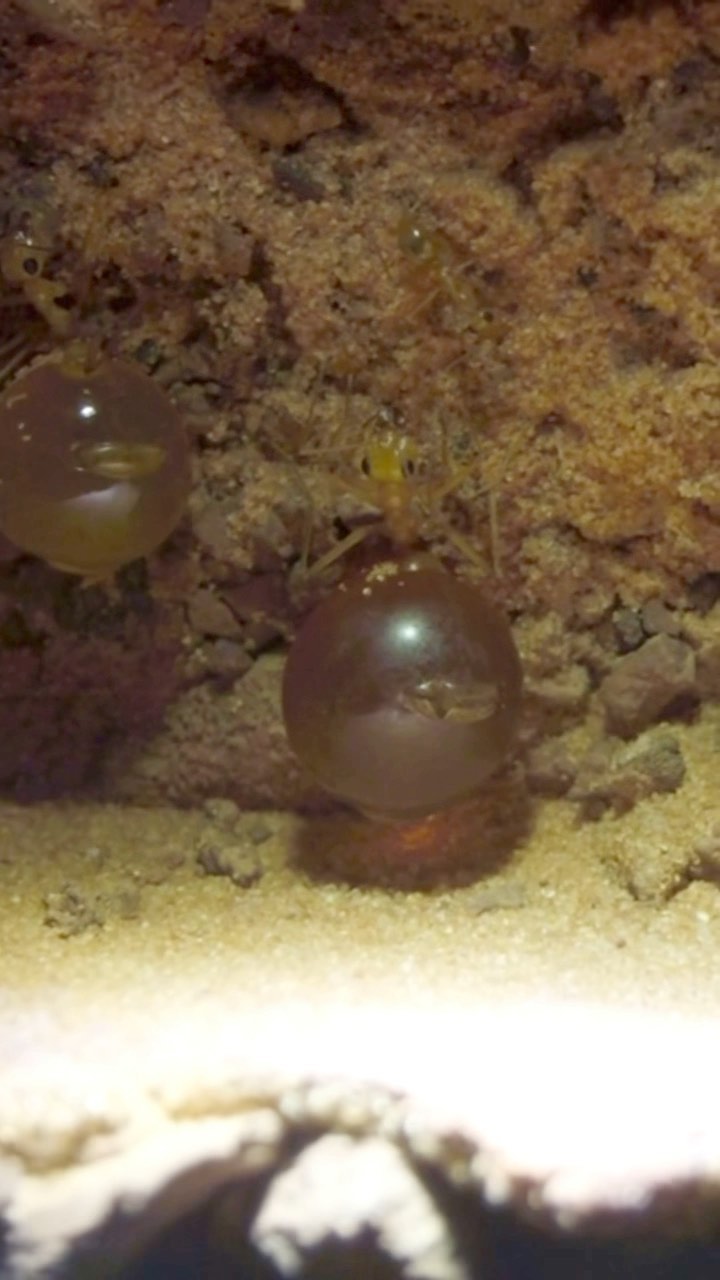Summary:
– Honeypot ants are unique insects that store food in their bodies.
– They can reach the size of a small grape.
– These ants are like tiny refrigerators for their colonies.
– The stored food helps the colony survive during food scarcity.
– The honey-like liquid they store is a precious resource.
Have you ever heard of honeypot ants? These fascinating creatures are not your ordinary ants. They have a secret ability that sets them apart from their fellow insects. Honeypot ants are like tiny refrigerators, storing food for their entire colony in their bodies! Yes, that’s right. These ants make honey-like liquids and store them within themselves. Let’s dive deeper into the world of honeypot ants and discover their unique and captivating characteristics.
First and foremost, let’s address the misleading name. Honeypot ants do not make honey as bees do. Instead, they produce a substance that resembles honey, which they store in their abdomens. Imagine becoming a living jar of honey! These liquid-filled ants can grow as large as a small grape, making them quite a sight.
So, why do honeypot ants go to such lengths to store food within themselves? These resourceful insects have evolved to overcome one of the biggest challenges for many organisms – food scarcity. In their natural habitats, honeypot ants live in arid regions where food sources can be scarce and unpredictable. During times of abundance, the worker ants collect and regurgitate food, which special honeypot ants then store. These honeypots become engorged with the sweet liquid, transforming into living food storage vessels for the entire colony.
The stored food plays a crucial role in the survival of the honeypot ant colony. When food becomes scarce, the honeypots serve as a vital reserve. Other colony members, including worker ants and larvae, feed on the stored liquid, sustaining themselves during lean times. It’s truly awe-inspiring how these little ants have found a way to ensure their own survival and support their entire community.
But how exactly do honeypot ants obtain and store the honey-like liquid? It all starts with the worker ants venturing out in search of food. These diligent foragers explore their surroundings, looking for nectar, insect secretions, and other sugary substances. Once they find a suitable food source, they return to the nest and regurgitate the liquid into the waiting mouths of the honeypot ants.
The honeypots have a unique ability to stretch their abdomens to accommodate the sugary liquid. As they fill up, their bodies expand, resembling tiny balloons or, as mentioned earlier, grapes. The beeswax-like outer layer of the honeypot ants’ abdomens helps to prevent the liquid from evaporating, ensuring a steady food supply for the colony. Incredibly, these ants have developed a specialized storage system to sustain themselves and their community.
It’s important to note that the role of a honeypot ant is temporary. Once a honeypot ant reaches its maximum capacity, it dedicates itself solely to storing food and becomes immobile. It becomes a living pantry, sacrificing its mobility for the colony’s benefit. This sacrificial act showcases the selflessness and cooperation that can be found within the animal kingdom.
The sweet liquid stored within honeypot ants has immense value to their colony. It contains essential nutrients, including carbohydrates, proteins, and vitamins, necessary for the survival and growth of the entire community. Without this precious resource, the colony could face serious challenges during food scarcity.
So, next time you stumble upon a honeypot ant, take a moment to appreciate the incredible feat of nature happening right before you. These tiny insects are not just ants but a living testament to the wonders and adaptability of wildlife. Their unique ability to store food internally is a testament to the remarkable solutions that evolution has produced. It serves as a reminder that even in the harshest environments, there is always a way to thrive.
In conclusion, honeypot ants are a marvel of nature. From their honey-like liquid storage to their sacrificial role within the colony, these ants showcase the intricate web of life in the animal kingdom. Their ability to adapt and overcome challenges serves as an inspiration to us all. So, let’s take a moment to appreciate these incredible creatures and the lessons they teach us about resilience and cooperation.
*****
Source Description
These are honeypot ants. Honeypot ants do not make honey. Rather, they make honey-like liquids that are stored in the ants themselves! 🐜 🍯
Honeypot ants are like tiny refrigerators, storing food for the colony when other food sources are scarce. They can even reach the size of a small grape.


